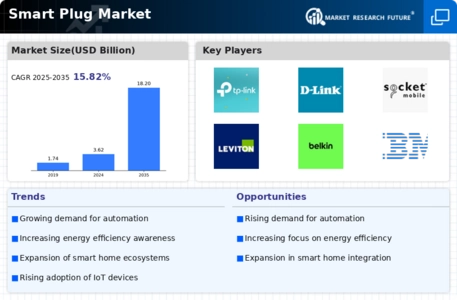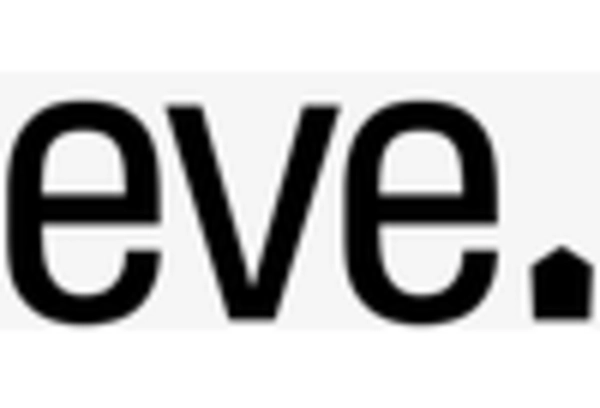Increased Focus on Home Automation
The Smart Plug Market is experiencing growth due to the heightened focus on home automation. Consumers are increasingly looking for ways to simplify their lives through technology, and smart plugs offer a convenient solution. By allowing users to schedule and control devices remotely, smart plugs enhance the functionality of home appliances. Market analysis shows that the home automation sector is projected to reach a valuation of several billion dollars by the end of the decade. This growth suggests that smart plugs will play a crucial role in the evolution of home automation, appealing to tech-savvy consumers seeking innovative solutions.
Growing Awareness of Sustainability
The increasing awareness of sustainability among consumers appears to be a driving force in the Smart Plug Market. As individuals become more conscious of their environmental impact, they seek solutions that promote energy efficiency. Smart plugs, which allow users to monitor and control energy consumption, align well with this trend. Reports indicate that energy-efficient devices can reduce electricity usage by up to 30%, making smart plugs an attractive option for eco-conscious consumers. This shift towards sustainable living is likely to propel the demand for smart plugs, as they offer a practical means to reduce carbon footprints while enhancing convenience in daily life.
Cost-Effectiveness and Accessibility
The Smart Plug Market is also driven by the cost-effectiveness and accessibility of smart plugs. As production costs decrease and competition increases, smart plugs are becoming more affordable for the average consumer. This trend is likely to encourage wider adoption, as individuals seek budget-friendly solutions to enhance their home energy management. Market Research Future indicate that the price of smart plugs has dropped significantly over the past few years, making them an attractive option for consumers looking to invest in smart home technology. This affordability, combined with the growing awareness of energy efficiency, positions smart plugs as a viable choice for many households.
Rise of IoT and Smart Home Integration
The proliferation of the Internet of Things (IoT) is significantly influencing the Smart Plug Market. As more households adopt smart home technologies, the integration of smart plugs into these ecosystems becomes increasingly essential. Smart plugs can seamlessly connect with various devices, enabling users to control appliances remotely through smartphones or voice commands. Market data suggests that the smart home market is expected to grow at a compound annual growth rate of over 25% in the coming years. This trend indicates a robust potential for smart plugs, as they serve as a gateway for users to enhance their home automation experience.
Advancements in Connectivity Technologies
Technological advancements in connectivity are shaping the Smart Plug Market. The development of Wi-Fi, Bluetooth, and Zigbee technologies has enabled smart plugs to offer enhanced features and improved user experiences. These advancements allow for more reliable connections and greater compatibility with a range of devices. As consumers demand more sophisticated functionalities, such as energy monitoring and integration with voice assistants, manufacturers are likely to innovate further. The market for smart plugs is expected to expand as these technologies evolve, providing consumers with more options and capabilities in managing their energy consumption.

















Leave a Comment